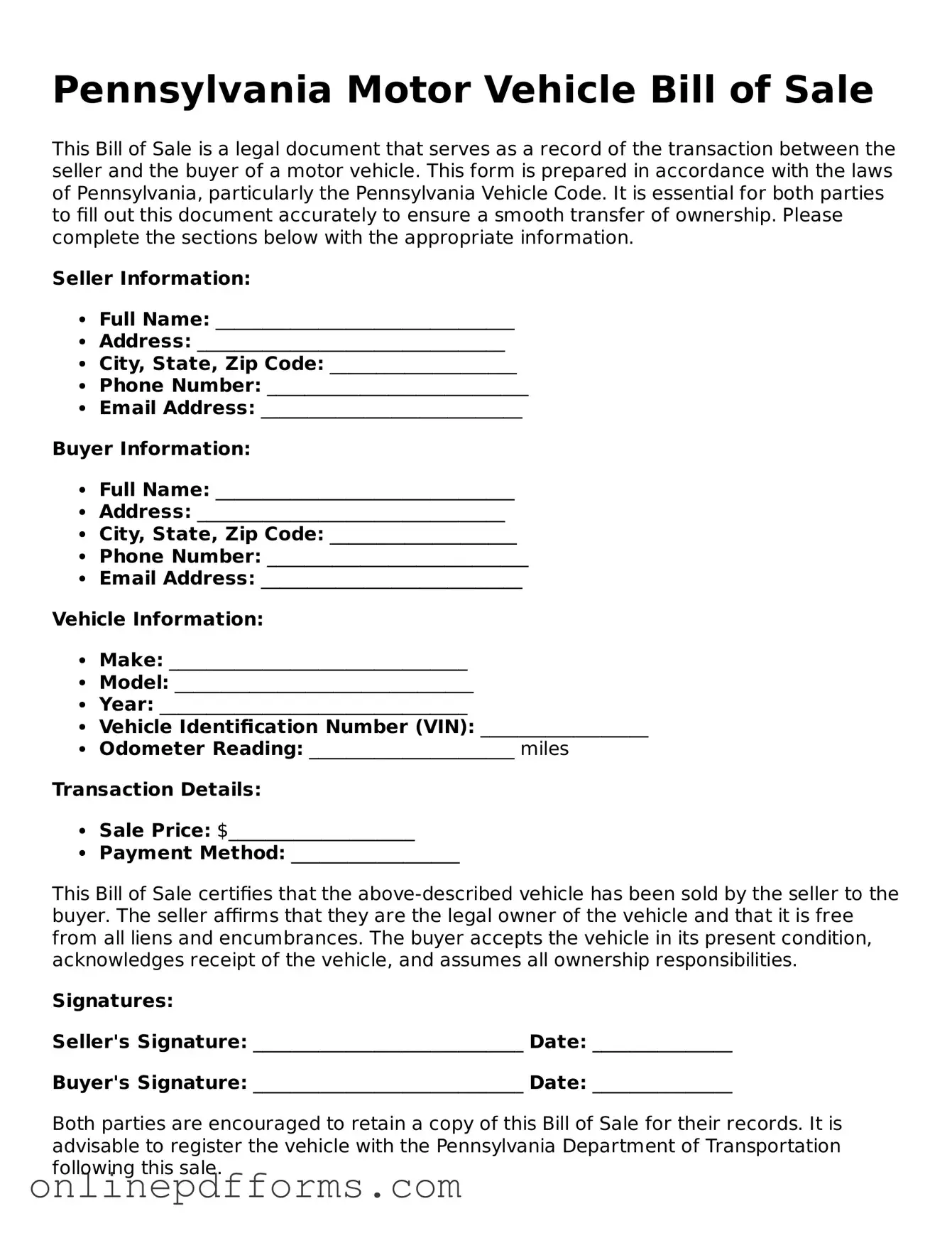The Pennsylvania Motor Vehicle Bill of Sale form bears similarities to the general Bill of Sale document used across various transactions. A standard Bill of Sale serves as a written record that one party has sold an item to another. Like the motor vehicle version, it typically includes details such as the names of the buyer and seller, a description of the item, and the sale price. Both documents provide a legal framework that protects the interests of both parties by clearly outlining the terms of the sale, thus preventing disputes that may arise after the transaction is completed.
Another document comparable to the Pennsylvania Motor Vehicle Bill of Sale is the Vehicle Title. The Vehicle Title serves as proof of ownership and is essential for registering a vehicle. When a vehicle is sold, the title is transferred from the seller to the buyer, similar to how a Bill of Sale documents the transaction. Both documents require specific information about the vehicle, such as the Vehicle Identification Number (VIN), and they play a crucial role in establishing legal ownership, ensuring that the buyer has the right to operate and register the vehicle.
The sales contract is another document that shares characteristics with the Pennsylvania Motor Vehicle Bill of Sale. A sales contract outlines the terms and conditions of a sale, including payment details, delivery methods, and warranties. Like the Bill of Sale, it serves as a binding agreement between the buyer and seller. Both documents protect the parties involved by detailing their obligations and rights, making it clear what is expected from each side during and after the transaction.
Lastly, the Odometer Disclosure Statement is relevant in this context. This document is often required during the sale of a vehicle to confirm the accuracy of the odometer reading at the time of sale. Similar to the Pennsylvania Motor Vehicle Bill of Sale, the Odometer Disclosure Statement helps to prevent fraud by ensuring that buyers are informed about the vehicle's mileage. Both documents are integral to the vehicle sale process, as they provide essential information that can affect the vehicle's value and the buyer's decision-making process.
